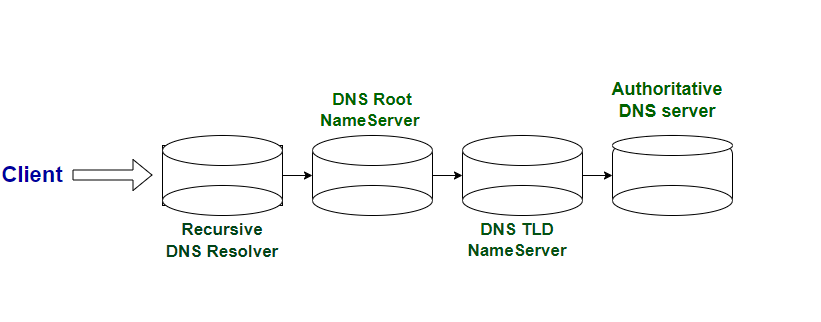A Top-Level Domain (TLD) Nameserver, also known as a TLD Nameserver or TLD DNS server, is responsible for handling DNS queries related to a specific top-level domain. In the Domain Name System (DNS) hierarchy, TLDs are the highest level, and each TLD has its own set of authoritative nameservers.

Here’s how the TLD Nameserver fits into the DNS resolution process:
- Root Nameservers: The DNS resolution process begins with a DNS resolver querying the Root Nameservers to find the authoritative nameservers for the specific TLD.
- TLD Nameserver: The Root Nameservers provide information about the TLDs, such as “.com,” “.org,” “.net,” etc. The resolver then contacts the authoritative TLD Nameservers for the relevant TLD based on the domain being queried.
- Responsibility for TLD: The TLD Nameservers are responsible for storing information about the second-level domains within their TLD. For example, the TLD Nameservers for “.com” would have information about domains like “example.com,” “google.com,” and so on.
- Referral to Authoritative Nameservers: If the TLD Nameserver does not have the specific IP address for the queried domain, it responds with a referral to the authoritative nameservers for the second-level domain. These authoritative nameservers are responsible for storing the actual DNS records for the queried domain.
- Distribution of TLD Information: TLD Nameservers play a crucial role in distributing information about the TLD and pointing resolvers to the correct authoritative nameservers for second-level domains within that TLD.
- Operated by Registry Operators: TLD Nameservers are typically operated by the registry that manages the corresponding TLD. The registry is the organization responsible for coordinating the registration and management of domain names within a specific TLD.
It’s important to note that TLD Nameservers are specific to each TLD, and there is a separate set of authoritative nameservers for each TLD in the DNS system. The distribution of DNS responsibilities among Root Nameservers, TLD Nameservers, and authoritative nameservers for second-level domains helps to efficiently organize and manage the vast number of domain names on the internet.
Management of TLD nameservers is handled by the Internet Assigned Numbers Authority (IANA), which is a branch of ICANN. The IANA breaks up the TLD servers into two main groups:
- Generic top-level domains: These are domains that are not country specific, some of the best-known generic TLDs include .com, .org, .net, .edu, and .gov.
- Country code top-level domains: These include any domains that are specific to a country or state. Examples include .uk, .us, .ru, and .jp.
There is actually a third category for infrastructure domains, but it is almost never used. This category was created for the .arpa domain, which was a transitional domain used in the creation of modern DNS; its significance today is mostly historical.